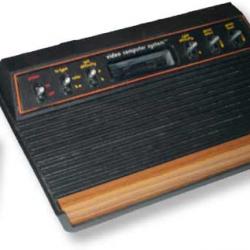Playstation 3 vs. Atari VCS
More demoscene stuff: a very recent PS3 demo (a real-time animation for you not in the know) and a very recent Atari VCS demo. The Atari VCS (redubbed Atari 2600) was pretty much the first game console for the masses and it was released in 1977. The Playstation 3 was released in 2006.
 Atari VCS |
 Sony Playstation 3 |
Linger In Shadows by Plastic is the first home brew production I have seen for Playstation 3. You can also download a high quality version of the Youtube video shown below.
Next, a demo (or intro, since most VCS demos are so tiny) by Simon Quernhorst called 4K4U. The author has announced that he’ll be selling cartridges of this later. In the mean time, you can download the rom for your emulator over here. A good VCS emulator would be Stella.
Again, I merely found the videos so a big thank you to the people who saw the trouble uploading the videos (it’s surprisingly hard to find a good screen capture tool as opposed to commercial crud!).

